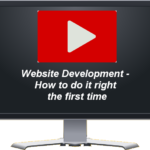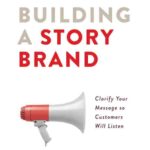We’ve all heard the advice: “Tackle your hardest work in the morning when you’re fresh.” And sure, that makes sense—if you’re looking to focus and plow through tasks. But if you want to spark real creativity or solve tough problems with fresh insight, science says your best time might actually be when you’re a little off your game.
Surprised? You’re not alone. A study from the University of Michigan flipped conventional wisdom on its head by finding that people perform better on creative tasks when they’re not at their mental peak. That means your most insightful ideas may come when your brain is a little foggy—not when it’s firing on all cylinders.
So, how should you structure your workday to play to your brain’s strengths at different times? Let’s break it down.
Morning: Focused Execution and Deep Work
Mornings are when most people feel sharpest. Your cognitive tank is full, distractions are minimal, and your attention span is at its best. This makes it the perfect time for focused, high-priority work such as:
- Writing
- Strategic planning
- Analyzing data
- Solving structured problems
- Outlining important projects
But here’s the mistake most people make: They waste this prime brainpower on email.
Sure, it feels productive to “clear the decks” first thing—but the reality is, email is a reactive task that scatters your focus and saps your energy before you’ve made meaningful progress on what really matters.
Reading and responding to email first thing in the morning risks giving away your sharpest thinking to someone else’s priorities. That time should be reserved for your most important work, not the world’s inbox.
Here’s a great example:
My son works in a restaurant, and the first thing they do each morning isn’t check email or scroll through Slack—it’s review the day’s menu and coordinate the plan. They walk through timing, staffing, prep work, and expectations. Why? Because they know this early window is when the team is most alert, creative, and capable of clear thinking. They protect that time for proactive planning rather than reactive firefighting.
Pro Tip: Start your day with 60–90 minutes of uninterrupted deep work. Don’t even open your email until you’ve accomplished at least one meaningful task.
Midday: Email, Admin, and Shallow Work
Late morning to early afternoon is a great time to check your inbox. Your energy is still relatively high, but your brain is no longer at peak focus. This makes it a good window for:
- Responding to emails
- Returning phone calls
- Scheduling meetings
- Paying bills
- Processing routine tasks
Email fits naturally here—after you’ve used your morning for high-value thinking. It’s a way to catch up and communicate without draining your best mental energy.
Tip: Try batching email into one or two dedicated sessions (e.g., 11:00 AM and 4:30 PM) to avoid constant context switching throughout the day. Personally, I shut down my email client to ensure I don’t receive the annoying “You Got Mail” notifications throughout the day.
Afternoon Slump: Unlocking Creativity When You’re Off Your Game
Right around 2:00 or 3:00 PM, most people hit a wall. Energy dips. Focus fades. And suddenly, that spreadsheet looks a lot less important than scrolling your phone or raiding the break room snack drawer.
But here’s the twist: this low-energy window may be one of the best times for creativity.
A study from the University of Michigan found that people actually performed better on creative, insight-driven tasks during their non-optimal times of day—when they were slightly unfocused or mentally fatigued. Morning people were more creative in the afternoon; night owls, in the morning. Why? Because during these off-peak hours, cognitive inhibition relaxes, allowing the brain to make looser, more novel connections—an essential ingredient for “aha!” moments.
In other words, when your brain is a little fuzzy, it’s actually more free to roam.
So what should you do when the slump hits? Here are three smart ways to use this time without wasting it.
1. Move Your Body to Wake Up Your Mind
There’s a science-backed way to beat the fog without reaching for a fourth cup of coffee: get moving.
Exercise—even light activity like a brisk 10-minute walk—boosts blood flow to the brain, improves oxygenation, and releases neurotransmitters like dopamine and serotonin that enhance both mood and mental sharpness. According to Harvard Medical School, physical activity also increases BDNF (brain-derived neurotrophic factor), which supports long-term brain function and cognition.
Instead of dragging your team into a conference room for an afternoon meeting, take them outside for a walking brainstorm. Walking meetings are more dynamic, stimulate new ideas, and help everyone think more clearly when they’d otherwise be zoning out.
Even if you’re solo, a short walk before tackling a stuck problem—or before making a big sales call—can help you reset and show up more engaged and persuasive.
2. Recharge With a Power Nap
Not in the mood to move? That’s okay. Sometimes the best move is no movement at all.
A 25-minute power nap can act like a mental reboot, restoring alertness and improving memory. Author Daniel Pink, in his book When: The Scientific Secrets of Perfect Timing, recommends the “nappuccino”—drinking a cup of coffee just before your nap. Since caffeine takes about 20 minutes to kick in, you’ll wake up feeling refreshed and alert just as the coffee starts to work.
Just be sure to keep it short—naps longer than 30 minutes may leave you groggy by entering deeper sleep cycles.
3. Let Your Mind Wander
This is not a cop-out—it’s a creative strategy.
When you’re tired, your brain is more likely to drift, and that’s not always a bad thing. Mind-wandering is closely linked to creative insight. It’s during these moments—when you’re staring out a window, doodling in a notebook, or lying quietly—that unexpected solutions tend to bubble up.
Rather than forcing focus, give your brain space. Journal. Sketch ideas. Sit quietly. You might just stumble on the idea you’ve been chasing all morning.
Best Tasks for the Slump:
- Brainstorming ideas
- Tackling stubborn problems from a new angle
- Walking meetings or solo strolls
- Light admin with background music
- Napping or resting with intention
- Journaling or mind-mapping
- Letting ideas percolate through daydreaming
You might not feel productive in the traditional sense, but this is often when your most innovative thinking happens. Learn to embrace the lull—not fight it—and you may find it’s the most powerful part of your day.
Evening: Light Tasks and Wind Down
Unless you’re a night owl, the evening is best suited for low-stakes, reflective work. Think:
- Reviewing what you accomplished
- Journaling
- Reading or watching something educational
- Sketching out tomorrow’s priorities
If you do happen to get a second wind, it’s a good time for passion projects or loose, exploratory thinking. Just be careful not to dive into something that keeps you up all night.
Final Thoughts: Time Your Tasks for Maximum Impact
Trying to do your best work at the wrong time of day is like trying to drive with the emergency brake on. Instead, use your brain’s natural rhythms to your advantage:
- Use the morning for deep, focused work—not email.
- Handle email and admin tasks late morning or early afternoon.
- Leverage the afternoon slump for creative insight and light problem-solving.
- Use evenings to review, reflect, and recharge.
Small changes to your schedule can lead to huge improvements in performance, creativity, and overall well-being.
Does your daily work schedule take advantage of your body’s best times to perform tasks?












